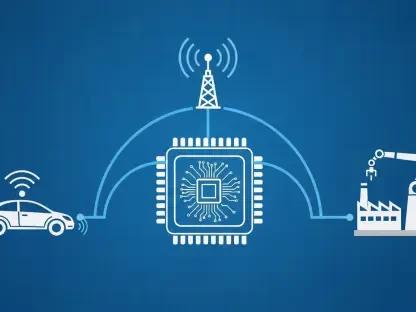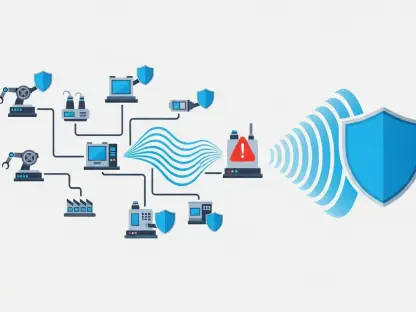T-Mobile US Inc. has made a landmark advancement in 5G technology by deploying Low Latency, Low Loss, Scalable Throughput (L4S) technology, making it the first major U.S. wireless carrier to do so at scale. This move marks a significant leap forward in addressing key issues hampering the user experience in mobile communications, particularly by reducing delays in data-heavy applications. T-Mobile announced on July 21, 2025, that this improvement forms part of its strategic goal to enhance its 5G Advanced network and counter longstanding issues related to network congestion. This innovative effort redefines how data is managed and could set a new precedent for others in the industry.
Revolutionizing Communication Efficiency
The Role of L4S in Real-Time Mobile Applications
L4S focuses on improving the efficiency of data transmission by giving priority to critical packets, which assists in navigating network bottlenecks more effectively. This approach is akin to a smart traffic system that optimizes the flow on existing infrastructure rather than just expanding capacity. Such technology introduces dynamic adjustments aimed at minimizing latency, a major concern in applications like cloud gaming, where even the slightest lag can severely impact user satisfaction. In tackling latency, L4S technology introduces explicit congestion notifications, allowing routers and devices to swiftly adjust, thus avoiding any data loss.
This infrastructure advantage enables increased stability for video calls and ensures smoother online interactions. For mobile gamers, particularly, this advancement promises reduced input lag, potentially leveling the playing field with traditional gaming consoles. The development provides a significant opportunity for app developers, as more reliable real-time applications become feasible. Services like GeForce Now have already set the stage by integrating L4S support, hinting at the transition for other applications and services to follow suit.
Implementational Challenges and Opportunities
T-Mobile’s application of L4S technology comes on the heels of earlier experiments by providers such as Comcast, though those trials focused on wired internet connections. In contrast, T-Mobile’s mobile-oriented deployment introduces unique complexities, notably those rooted in signal interference and mobility. The adaptive capabilities of L4S can overcome these hurdles, leading to an improved user experience. However, widespread benefits from this technology are not guaranteed simply by network improvements. Broad adoption across devices, applications, and content providers is necessary to realize its full potential.
As T-Mobile continues its rollout, starting with select markets and ultimately aiming for national coverage, the potential for driving industry-wide innovation is evident. It encourages a paradigm shift from the traditional focus on speed increment to enhancing the quality of user experiences. With the evolution from 5G to the forthcoming 6G, L4S technology could become standard, offering new benchmarks for global mobile connectivity. T-Mobile’s focused move on low-latency communications foreshadows potential innovations that might prompt a reevaluation of connectivity standards on a more extensive scale.
Shaping Future Connectivity Solutions
The Long-Term Impact of L4S in the Mobile Landscape
As 5G technology matures, the integration of L4S stands as a pivotal development poised to influence future connectivity solutions profoundly. Its role in refining data transmission aligns with consumer expectations for seamless, real-time digital interactions. Given the escalating demands on network infrastructure, adaptations like those offered by T-Mobile are more than necessary—they are pivotal. With comprehensive ecosystem support, including device manufacturers and application developers, T-Mobile’s initiative has the potential to set transformative standards in mobile communication.
By prioritizing latency reduction, the company opens doors to new applications that rely heavily on real-time data exchange. These could range from virtual reality (VR) experiences to autonomous vehicle communication systems, where minimal delay is crucial. An ecosystem supportive of L4S allows both users and industries to benefit from unprecedented levels of connectivity efficiency, fostering a new wave of technological growth and expansion in digital sectors.
Pathway to Global Standardization and Innovation
T-Mobile US Inc. has achieved a groundbreaking milestone in the evolution of 5G technology by rolling out Low Latency, Low Loss, Scalable Throughput (L4S) technology on a large scale, making it the first prominent U.S. wireless carrier to do so. This advancement represents a notable progression in overcoming core challenges affecting the mobile user experience, especially regarding latency in data-intensive applications. Announced on July 21, 2025, this initiative is part of T-Mobile’s strategic mission to advance its 5G network and tackle persistent problems like network congestion. The implementation of L4S technology offers significant improvements, ensuring a smoother and more efficient data management process. This breakthrough has the potential to establish new standards in the industry as T-Mobile leads the way in redefining mobile communications. By setting a precedent, T-Mobile could inspire other industry players to adopt similar innovations to enhance their networks and customer experience.









